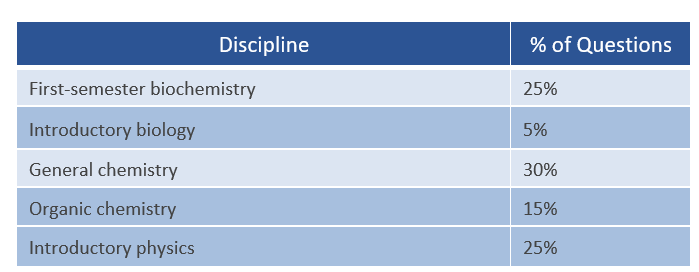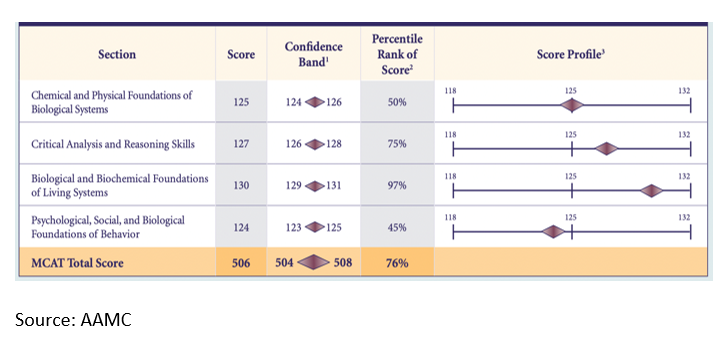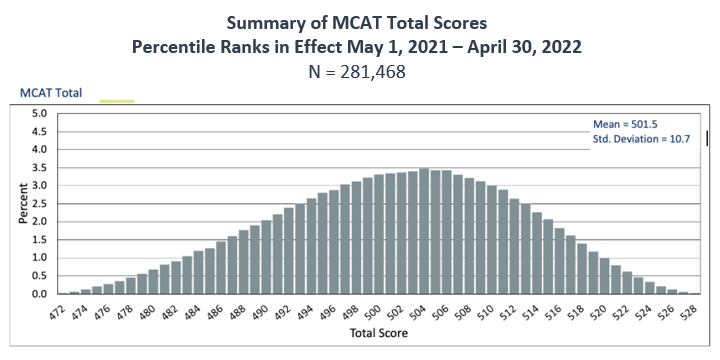 The MCAT (Medical College Admissions Test) is the standardized test required for applications to both MD and DO medical schools. While other factors—including grades, clinical experience, shadowing, research, and recommendations—are also considered, admissions officers place unique emphasis on your MCAT score. This is because the MCAT provides a robust assessment of science and social science knowledge that medical schools expect students to have before they enroll, and because it assesses this knowledge in a standardized way.
The MCAT (Medical College Admissions Test) is the standardized test required for applications to both MD and DO medical schools. While other factors—including grades, clinical experience, shadowing, research, and recommendations—are also considered, admissions officers place unique emphasis on your MCAT score. This is because the MCAT provides a robust assessment of science and social science knowledge that medical schools expect students to have before they enroll, and because it assesses this knowledge in a standardized way.
Our blog contains a 3-part series on the MCAT. Today’s blog post is on the structure and scoring of the MCAT. Part II reviews options for preparing for the test. Part III discusses the impact of your MCAT schedule on your overall med school application timetable.
Test Structure
The MCAT consists of four sections, as shown below:
The first three sections test your knowledge of scientific concepts and principles, and your skills in scientific inquiry and reasoning, research, data analysis, and statistics. The final section tests your skills in reading comprehension and analysis.
The sections cover the following content:
Biological & Biochemical Foundations of Living Systems. This section “asks you to solve problems by combining your knowledge of biological and biochemical concepts with your scientific inquiry and reasoning skills” (AAMC). The section tests concepts taught in intro-level biology, organic chemistry, inorganic chemistry, biochemistry.
The approximate breakdown of the test questions by discipline is:
Chemical & Physical Foundations of Biological Systems. This section “tests your understanding of the mechanical, physical, and biochemical functions of human tissues, organs, and organ systems” (AAMC).
The approximate breakdown of the test questions by discipline is:
Psychological, Social & Biological Foundations of Behavior. This section tests “your understanding of the ways psychological, social, and biological factors influence perceptions and reactions to the world; behavior and behavior change; what people think about themselves and others; the cultural and social differences that influence well-being; and the relationships between social stratification, access to resources, and well-being” (AAMC).
This section was added to the MCAT in 2015, in response to medical educators’ increasing awareness of how much a patient’s psychological factors and socio-economic status affect their physical condition, immune system, and chances for recovery.
The approximate breakdown of the test questions by discipline is:
Critical Analysis & Reasoning Skills. The section includes passages between 500 and 600 words, divided evenly between the humanities and social sciences. The passages are multifaceted and require you to comprehend, analyze and reason about the material you have read. The content draws from a wide variety of disciplines, including as the humanities fields of art, literature, music, philosophy, and religion; as well as the social science areas of anthropology, economics, history, psychology, and sociology.
Test Scoring
Your score on each of the MCAT’s four sections will be converted to a number between 118 to 132. Your total score will be a sum of the four section scores, and will fall between 472 and 528. (The MCAT is scaled in this way in order to maintain consistency from test to test.) The four sections have equal weight in the total score; the 50th percentile score is 125 for each section, and 500 for the total score. There is no penalty for incorrect or omitted answers.
The scores are provided in a chart such as the following:
Percentile Ranks
The percentile ranks compare your score to others who took the exam. The confidence bands show the range of scores you could expect on another MCAT, in other words, the likely variation that a particular test-taker would have from one test to another.
The percentile ranks are updated on May 1st of each year, based on the preceding three years. The purpose is to maintain consistency of scores across tests and across years: to avoid having a student’s score assessed unfairly because the test-taking population in a given year is skewed one way or another. The percentile ranks on the chart below are based on the MCAT results from the 2018, 2019, and 2020 testing years combined. Results form a bell-shaped curve. The score of 518, which is considered extremely competitive for the most selective med schools, is at the 95th percentile, i.e. only 5 % of test-takers score above 518.
Scores of Accepted Students at Sample Colleges
The MSAR (Med Schools Admissions requirements) provides extremely helpful information about the scores for accepted students. For example, in the chart below for Columbia University College of Physicians and Surgeons, the median MCAT score is 522. The mid 50th percentile is 519-524, which is extremely high and uncommon! And the 10th percentile is 516, well above average, with the 90th percentile at 525, a nearly perfect score. It would be unlikely for students to be admitted on the low end of this range unless they were an institutional priority such as underrepresented minority or first-generation applicant.
In contrast, below are the comparable scores at Sidney Kimmel Medical College at Thomas Jefferson University, an excellent but less selective medical school.
Applying to medical school is a long and challenging process. Explore the upcoming presentations on our website or set up a complimentary consultation to learn about our services. For more information or guidance regarding the MCAT, or any other aspect of the admissions process, contact Collegiate Gateway, we’re always happy to help!










